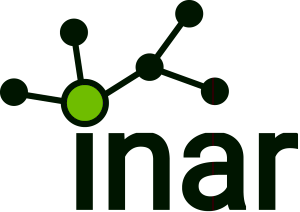EnviroFry recommends ten mold remediation procedures and techniques for the effective and safe removal of mold growth in homes, workplaces, and commercial buildings in USA, Canada, UK, Europe, Asia, Australia, and New Zealand.
Montrose, MI, January 04, 2015 — “Because most mold remediation jobs done by mold removal companies and do-it-yourself property owners and managers fail to find and get rid of all of the mold often hidden inside moldy homes, workplaces, and commercial buildings, EnviroFry recommends that property owners, managers, mold remediation firms, and insurance adjusters follow the top ten mold removal and remediation steps and procedures utilized by EnviroFry in the USA, UK, Europe, and Asia,” advocates Phillip Fry, EnviroFry co-manager, Professional Industrial Hygienist, and Certified Environmental Hygienist.
1. Mold inspection and testing. Industrial or environmental hygienists should first do thorough and complete mold inspection and testing to find all areas of both visible and mold growth hidden inside ceilings, walls, floors, heating/cooling equipment and ducts, crawl spaces, basements, and attics.
The hygienists should use an infrared thermal imaging camera, moisture meter, fiber optics video inspection camera, and hygrometer humidity meter to find hidden mold infestation, water leaks and other moisture problems. In addition, the hygienists also do mold testing of room air and the outward air flow from heating/cooling air ducts, plus surface mold sampling of suspicious surfaces.
2. Work Area Containment. The hygienists should seal off the room or area to be mold remediated with 6 mil thick floor-to-ceiling, wall-to-wall, clear plastic sheeting so that mold spores released during mold removal do not travel to and mold cross-contaminate other areas.
3. Proper Worker Protection. During mold removal work, hygienists should wear a 3M or comparable breathing respirator mask with organic vapor filters rated P100, plus eye goggles, disposable vinyl gloves, and Tyvek or comparable protective body suits with built-in parka hood and booties.
4. Ozone Treatment. The first mold killing step is to run several high output ozone generators for at least six to eight hours in all building areas, including inside the rooms or areas being mold remediated, all other rooms and areas, the building’s heating/cooling equipment and ducts, attic, crawl space, and basement. There can be no people, pets, or live plants inside the area being ozone treated.
5. Mold-Eating Enzyme Treatment. The hygienists should use a fogging machine to fog the entire house or building (including the attic, basement, crawl space, and inside HVAC ducts) with a proven, enzyme-based disinfectant cleaner that neutralizes and prevents mold and bacteria growth.
6. HEPA Air Scrubbing and Vacuuming. After the completion of the ozone and mold enzyme treatments, the hygienists should run several high capacity HEPA industrial-sized air scrubbers inside the contained mold work area to establish negative air pressure therein to collect airborne mold spores and dust thrown into the air during the mold removal process, with the HEPA exhaust air duct tubing going directly to the outdoors. In addition, the hygienists utilize HEPA vacuum cleaners to vacuum walls, floors, carpeting, and furnishing surfaces three ways—horizontally, vertically, and diagonally.
7. Physical Mold Removal. While operating HEPA air scrubbers inside the mold work area, remove all visible mold growth by removing and discarding materials such as moldy drywall, curtains, and carpeting, and by cleaning wood timbers to visibly mold-free with the use of a power grinder with wire brush attachment, power sander, power planer, and/or hand held wire brushes and sanding blocks.
8. Safe Disposal of Moldy Materials. While inside the contained mold work area, the hygienists should place all removed moldy building materials into 4 mil thick trash disposal bags. Then, the hygienists should put each full bag inside a second 4 mil thick bag (known as “double bagging”). Then, the hygienists should wipe off the outside of the outer bag with a cloth lightly damp with a cleansing agent to remove any landed or deposited mold spores. Then, the hygienists should remove the bags to the outdoors through windows, doors, or an enclosed plastic-sheeted walkway without taking the bags through building areas that are outside of the contained work area.
9. Encapsulation of Wood Timbers. After completion of the above steps, the hygienists should paint all exposed and remediated wood timber surfaces with white, glossy latex enamel paint into which one half pound of the EPA-registered fungicide Tim-Bor has been thoroughly mixed. Tim-Bor is a long-term preservative of wood against both mold and wood-destroying insects such as termites. The glossy latex paint coating will also help to protect the wood against water penetration in the event of a future plumbing leak, roof leak, or other water intrusion.
10. Clean and Disinfect HVAC Ducts. If there has been a mold problem inside a building, its heating, ventilating, and air conditioning (HVAC) ducts are likely to be contaminated with elevated levels of airborne mold spores and mold growth. Therefore, the hygienists should clean and disinfect HVAC ducts with these procedures: (a) use EnviroFry’s high-tech Rotobrush air duct cleaning equipment; (b) inspect the entire length of air duct runs with its 63 feet long fiber optics cable video camera; (c) after duct cleaning, do more high output ozone treatment into the return air duct to get mold-killing ozone everywhere in the HVAC system and throughout the entire building; and (d) after ozone treatment, use a fogging machine to fog thoroughly the HVAC ducts with a fungicide approved by the E.P.A. for use inside air ducts.
To schedule EnviroFry professional mold removal and remediation for a home, workplace, or commercial building anywhere in the USA, Canada, United Kingdom, Europe, Asia, Australia, and New Zealand, phone mold expert Phillip Fry toll-free 1-866-300-1616 or cell phone 1-480-310-7970, or email phil@moldinspector.com, or visit the company’s websites www.moldexpertconsultants.com, www.moldremediationquote.com and www.moldremediationbid.com.
Contact:
Phillip Fry, Co-Manager
EnviroFry
10104 Sheridan Rd.,
Montrose, MI 48457
Phone toll-free 1-866-300-1616
Cell 1-480-310-7970
phil@moldinspector.com
http://www.moldremediationquote.com and
http://www.moldremediationbid.com
